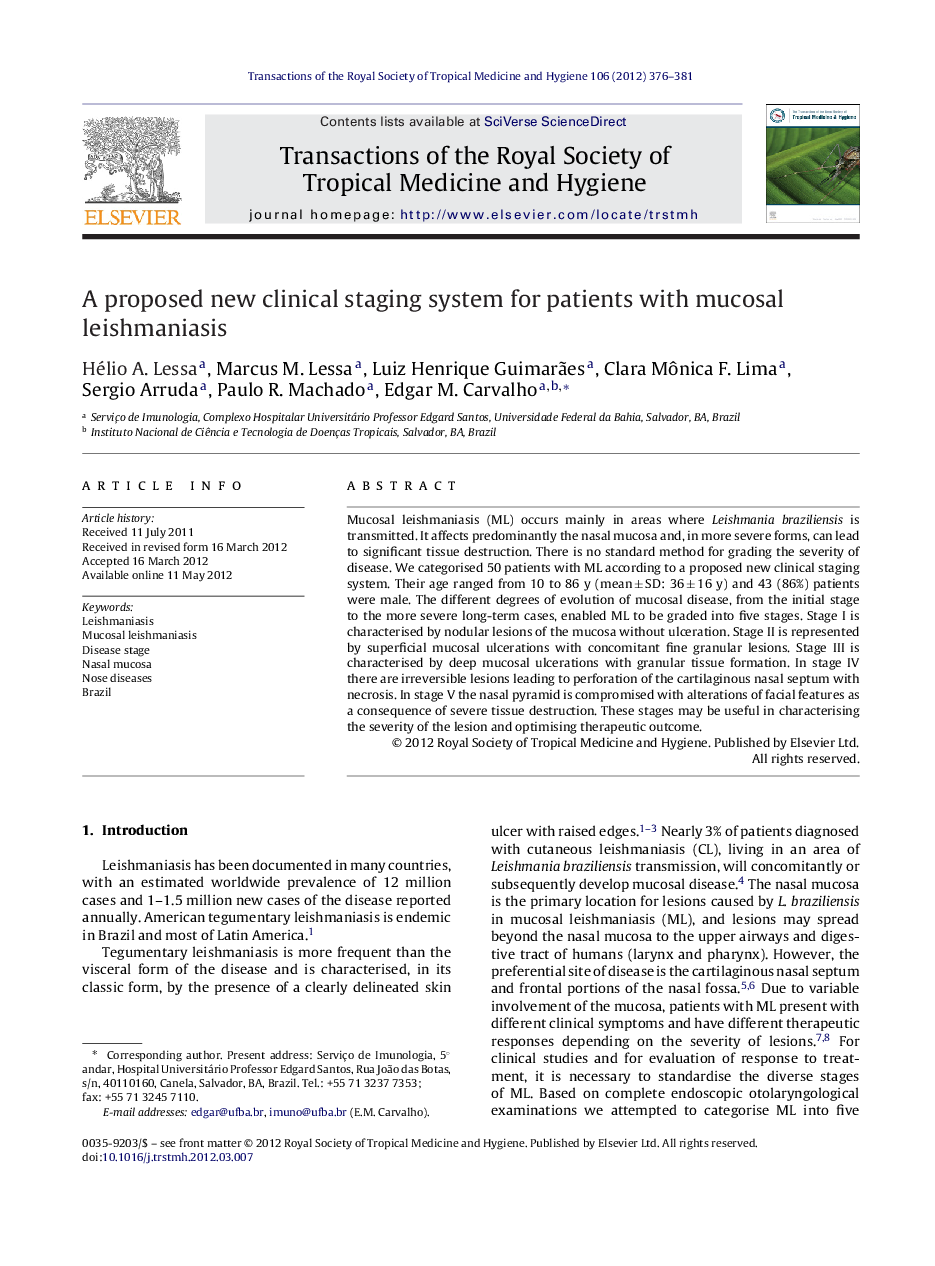| Article ID | Journal | Published Year | Pages | File Type |
|---|---|---|---|---|
| 3420375 | Transactions of the Royal Society of Tropical Medicine and Hygiene | 2012 | 6 Pages |
Abstract
Mucosal leishmaniasis (ML) occurs mainly in areas where Leishmania braziliensis is transmitted. It affects predominantly the nasal mucosa and, in more severe forms, can lead to significant tissue destruction. There is no standard method for grading the severity of disease. We categorised 50 patients with ML according to a proposed new clinical staging system. Their age ranged from 10 to 86 y (mean ± SD: 36 ± 16 y) and 43 (86%) patients were male. The different degrees of evolution of mucosal disease, from the initial stage to the more severe long-term cases, enabled ML to be graded into five stages. Stage I is characterised by nodular lesions of the mucosa without ulceration. Stage II is represented by superficial mucosal ulcerations with concomitant fine granular lesions. Stage III is characterised by deep mucosal ulcerations with granular tissue formation. In stage IV there are irreversible lesions leading to perforation of the cartilaginous nasal septum with necrosis. In stage V the nasal pyramid is compromised with alterations of facial features as a consequence of severe tissue destruction. These stages may be useful in characterising the severity of the lesion and optimising therapeutic outcome.
Related Topics
Life Sciences
Immunology and Microbiology
Applied Microbiology and Biotechnology
Authors
Hélio A. Lessa, Marcus M. Lessa, Luiz Henrique Guimarães, Clara Mônica F. Lima, Sergio Arruda, Paulo R. Machado, Edgar M. Carvalho,
